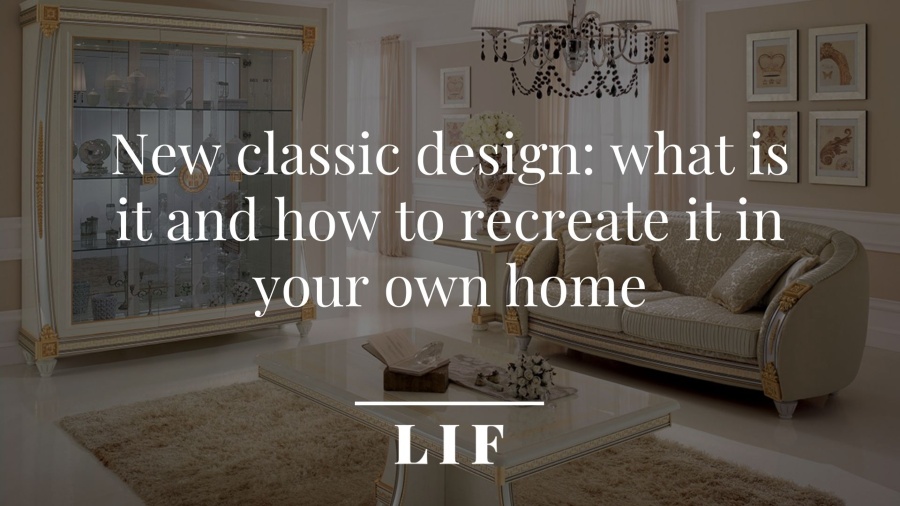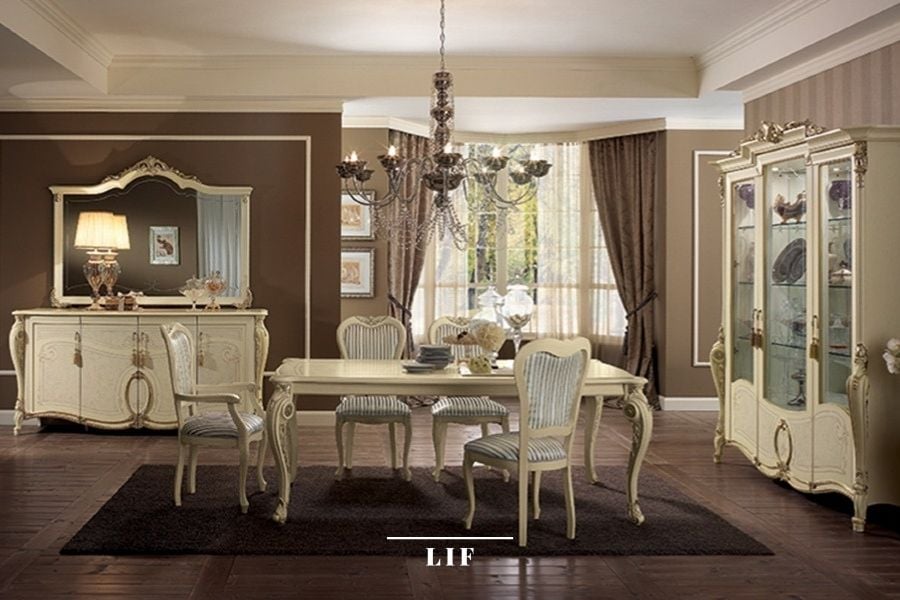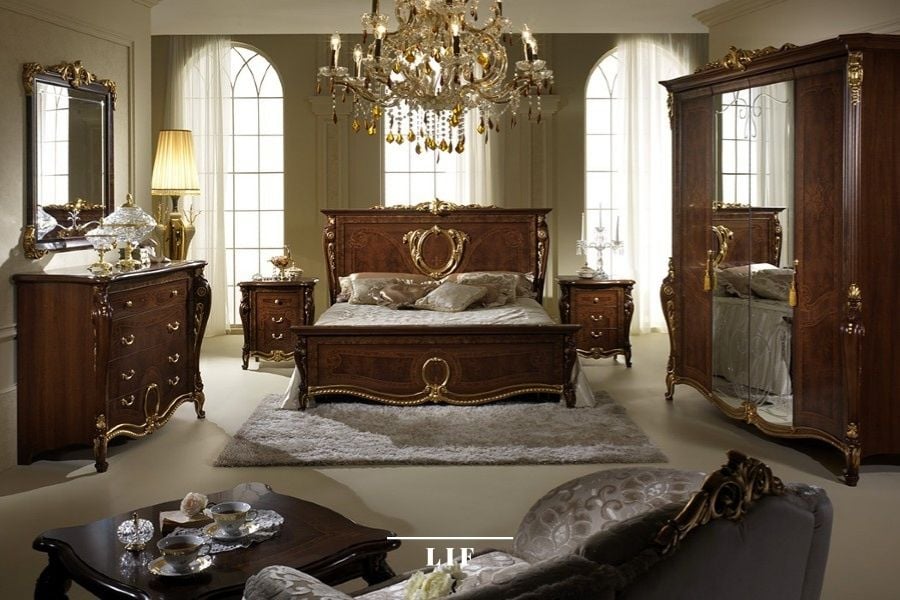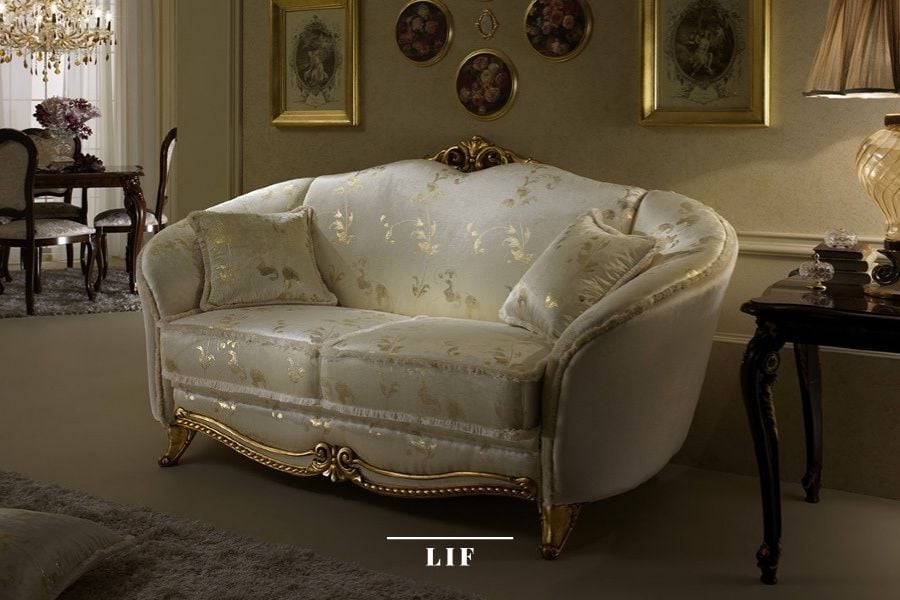Whether it's historic homes refreshed by the presence of contemporary design or, vice versa, minimalist and modern flats embellished with elegant classical furnishings, the New Classic style is able to create a fascinating combination of atmospheres, enhancing interiors with unusual combinations and bold choices.
If you are curious about learning the secrets of the Neoclassic Style to recreate it in your own home, read on.
We are about to embark on a journey that will take us on an in-depth look at the key elements of classic interior design that are pleasantly mixed with furnishings that are "on trend" and suggest unexpected twists.
- The fascinating contrasts of the New Classic style
- Neoclassical style house: some style rules
- Medium to large spaces
- Attention-grabbing furniture
- Understated palette with colour accents - A delicate balance between classic and contemporary

The fascinating contrasts of the New Classic style
The word itself, New Classic, suggests a fundamental contradiction. On the one hand there is the new, i.e. everything that is trendy in terms of lines, materials, colours and finishes.
On the other hand, there are the canons of Italian classic style, fixed and reassuring points that lend character and personality to the interior without affecting the balance of the overall vision.
As with other styles based on the contamination of atmospheres - think of shabby-chic, the "scruffy elegant" that encompasses a multitude of souls and facets - New Classic Design also starts with an evocative linguistic and conceptual juxtaposition and then moves on to worlds that intersect and give life to dynamic and diversified, rich and opulent, while at the same time balanced and harmonious furnishing projects. Certainly never banal.
After all, it is the same classic Italian style that is rooted in a mix of different flavours and influences: basic taste is sober and refined, but does not disdain luxurious details, "sumptuous" furnishings, fine fabrics and palettes that create bright focal points.
Neoclassical style house: some stylistic rules
Luxury classic furniture retains the kind of charm that is unlikely to fade: a mixture of history, tradition, status-symbol and refined taste.
Around the 'pure' declination of the classical style, cross-currents have emerged over time - for example, Baroque, Rococo and Art Deco imperial style, Baroque, Rococo and Art Deco Art Deco - but also mixes of genres which, if possible, have made the luxurious classical style even more interesting and timeless.
New Classic Design is the perfect example of the stylistic developments and blends we are talking about, as it represents the modern interpretation of classic style.
In essence, neo-classicism in interior design encompasses all the basic classical characteristics, but is more flexible and can be better adapted to the realities of contemporary houses and apartments.
Let's take a look at the main stylistic features of New Classic furniture.

1. Medium to large spaces
If we want to indicate a basic rule, we could say that neoclassical furniture requires space.
Not necessarily a very large space, but still suitable for sumptuous , luxurious furnishings and accessories based on the concept of more is more, rather than less is more with minimalist inspiration.
2. Attention-grabbing furniture
The need for space also stems from another reason: furniture design gravitates around the presence of one or two central (and often imposing) elements that focus the eye and steal the show.
The focal point in the bedroom can be a four-poster bed, while in the living room it can be a large fireplace, a large sofa, a dining table or a luxurious chandelier with pendant crystals.

3. Understated palette with colour accents
The third rule concerns the guiding colours of classic interior design.
For the backgrounds and walls, a light, neutral and refined palette is preferred - declined in the tones of white, ivory, cream, beige, sand or on the scale of greys (dove grey, pearl grey, silver) - on which to insert the accents of the various types of wood and a few touches of bright colour (burgundy, sapphire blue, gold, emerald, olive green, mustard) with which to decorate sofas and armchairs, curtains, carpets, paintings and accessories.
A delicate balance between classic and contemporary
We have seen how the New Classic transcends the fashions of the moment to become a unique style that is difficult to pin down.
The two souls - classical and contemporary - do not just coexist, but can enhance each other.
The architectural diatribe between new and old is only apparent: the fusion of the two dimensions is successful if the strengths of both are preserved, if a central point is identified from which to start, and if the correct integration is created between classicist taste and the new requirements of comfort and functionality.
For example, in a historic residence or an old villa, the New Classic style furnishing project could find its (essential) starting point in the conservation and restoration of the original elements of greatest architectural value - stuccoes, decorations, coffered ceilings, mosaics, arches, columns - and build everything else around them, from the choice of guide colours to the arrangement of the furnishings.
How does the New Classic style fit into such an architectural project?
On the one hand, pure classicism could be enhanced by the richness of the walnut-root display cabinets with rose gold trim, the elegance of the velvet-covered capitonné sofas and the light of the glass-framed mirrors.
On the other hand, the minimal-contemporary side could peep out next to the imperious traditional Made in Italy furnishings to lighten and dilute the abundance of the classic style, without distorting its innate class.
You could play with the alternation of materials and colours, inserting modern-inspired cladding (resin, micro-concrete, stoneware, metal) in strategic points of the villa, choose cold, textured colours for one or more portions of the wall, underpin the style with accents of contemporary art or add (in small or large doses) chameleon-like, multi-tasking furnishings that perfectly interpret the frenetic lifestyle of our times.

This is just one example of the many ways in which we can combine and design furniture in a classical and neoclassical style.
Let's try the reverse reasoning.
In the case of a contemporary apartment, the central node around which to build the New Classic look is undoubtedly the distribution of space: rational, functional, with more emphasis on practicality than on decorative frills.
The modern living area is conceived as an open, shared space, and the choice of furniture, textiles and accessories moves in the direction of concepts such as conviviality, versatility and adaptability.
However, there is nothing to prevent the addition of a touch of luxury, sumptuousness and softness to the geometric and square approach of modern buildings.
In this case, it is the classic details that take on the delicate task of softening the rationality of modern design. In what way? Simply by expressing yourself!
Here are accents of elegance, value and stylistic refinement in the furnishing project: curved, enveloping lines, silky fabrics, colours in walnut or elm finishes, gold leaf decorations, elegant silk-screen prints, neoclassical furnishings from the sinuous and refined silhouette marble surfaces, precious woods and shiny palettes that wink at precious metals.

Stylistic contaminations are always fascinating, even more so if, as in the case of the New Classic, they give rise to a style in its own right, codified according to very precise canons, but always ready to shuffle the cards and suggest new combinations.
Just as in architecture, the old can be dusted off by the new, and the new embellished by history, so in the same way, the classical and the contemporary can dance in unison to create refined but essential, luxurious but light, elegant but not redundant environments classic style interior design and contemporary can dance in unison to create environments that are refined but essential, luxurious but light, elegant but not redundant.
It doesn't matter whether the needle of the scales tips more towards the classic or the contemporary: what counts is creating chromatic harmony, compositional balance and alchemical fusion between apparently distant inspirations.
After all, isn't this the true soul of New Classic Design?

